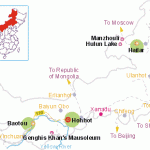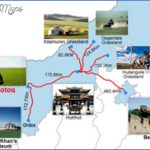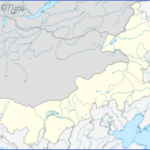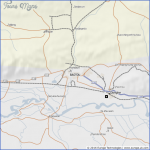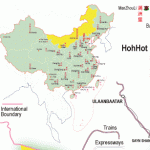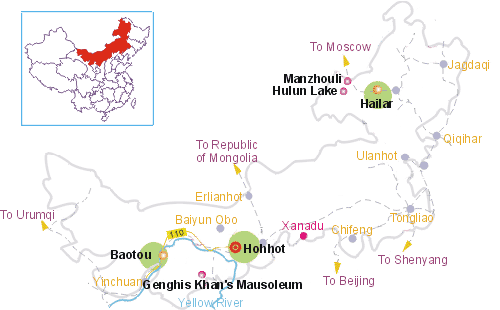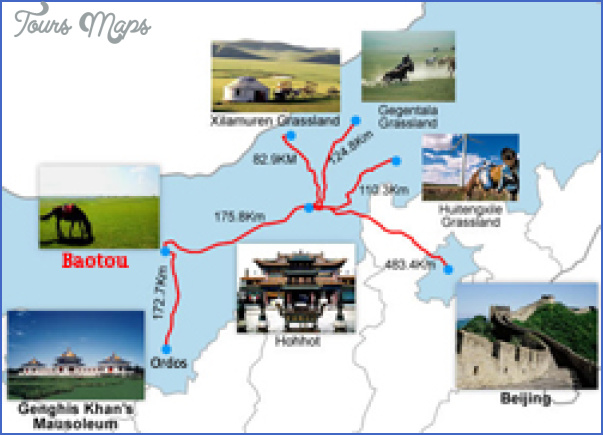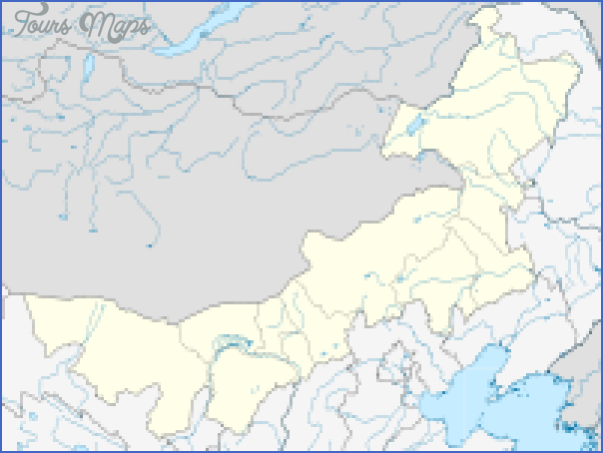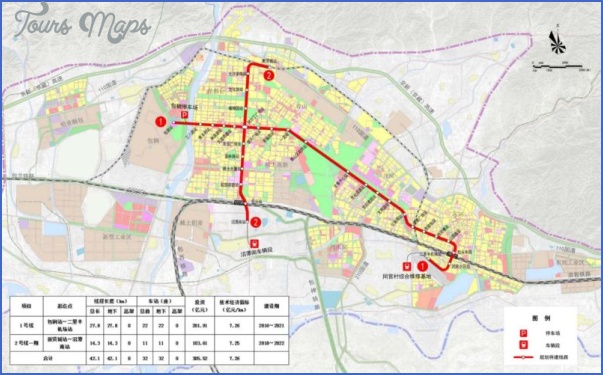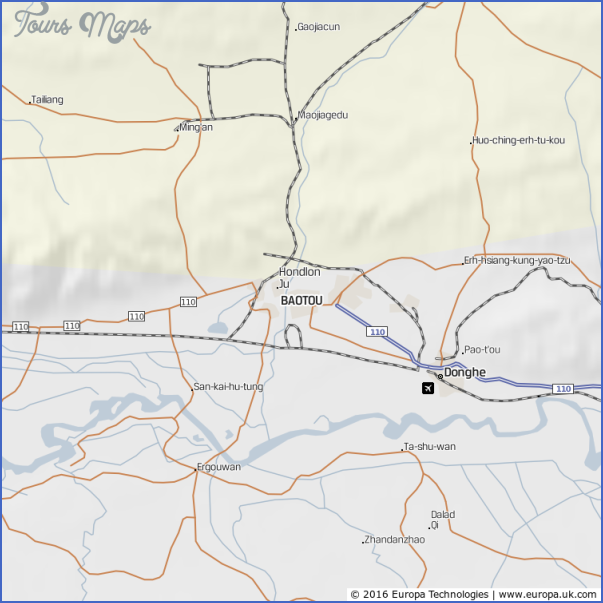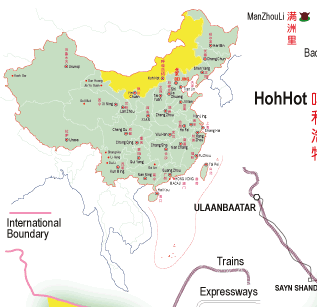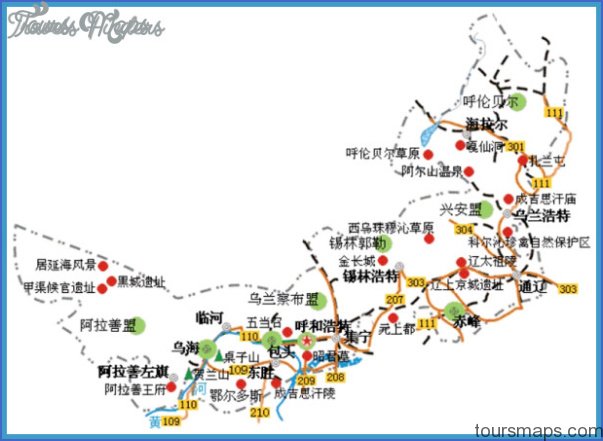Autonomous region of Inner Mongolia Altitude: 1000m/3282ft
Area: 2152sq.km/831sq. miles. Population: 1,500,000
Baotou lies in the centre of Inner Mongolia at 109°49’E and 40°42’N, some 140km/87 miles west of Hohhot, the regional capital, on the north bank of the Huanghe river.
Baotou is one and a half hours by air from Beijing and three and half hours by rail from Hohhot. It is an important rail station on the Beijing Lanzhou line, which also passes through Hohhot.
As a result of the growth of many branches of industry, including iron-smelting in particular, Baotou has become the economic centre of Inner Mongolia. Together with Anshan, Wushan, Shanghai and Beijing it is one of China’s major producers of steel.
People lived in this region back in the Tang dynasty (618-907), but only in recent centuries did it develop into a trading centre. This development was accelerated by the construction of the rail link with Beijing in 1923, when it became the major trading hub of Mongolia and western China. Transport facilities were improved still further by the construction of the rail route to Lanzhou in the 1950s. Since then Baotou has become a centre of the steel industry, which utilises the rich iron-ore deposits found in Bayo Obo.
The famous Mongolian Nadamu Autumn Festival, which was celebrated originally to honour the gods ofthe hills and mountain paths, has become a popular festival with riding, wrestling and archery competitions as well as musical and theatrical performances.
This temple, built in the Qing period (1644-1911) in a style reminiscent of that of Tibet, consists of flat-roofed buildings of two storeys. The complex also includes the White Pagoda (Bai Ta), surmounted by a stupa. The Awang Fu, a large “gateway of honour”, is also worthy of note.
Surroundings
The “Willow Tree Monastery”, a lamasery situated 70km/44 miles northeast of Baotou, is one of the best-preserved of any in Inner Mongolia. Built under the Kangxi Emperor Xuanye (reigned 1661-1722), it was restored in 1749. At one time more than 1000 monks lived here. The complex of 2500 rooms covers an area of 20ha/50 acres and embraces some twelve temple buildings containing statues of Shakyamuni and other Buddhist saints.
Covering an area of 5-5ha/133/4 acres this mausoleum, said to contain the remains of Genghis Khan, lies in beautiful surroundings 120km/75 miles south of Baotou and 15km/9 miles south-east of the town of Atengxilian. It was moved here in 1954 from Kumbum Monastery (Ta Er Si) near Xining. The mausoleum consists of three magnificent halls with roofs of gilt-glazed tiles. The great ruler and his three wives lie at rest in the main hall, where a statue of him also stands. The two side-halls contain Mongol costumes and weapons. In the south-eastern part of the complex stands the Palace ofthe Great Khan. The nearby museum village portrays the life led by the Mongols in the time of Genghis Khan.
Baotou Map Photo Gallery
Maybe You Like Them Too
- The Best Cities To Visit in The World
- World’s 10 Best Places To Visit
- Coolest Countries in the World to Visit
- Travel to Santorini, Greece
- Map of Barbados – Holiday in Barbados

